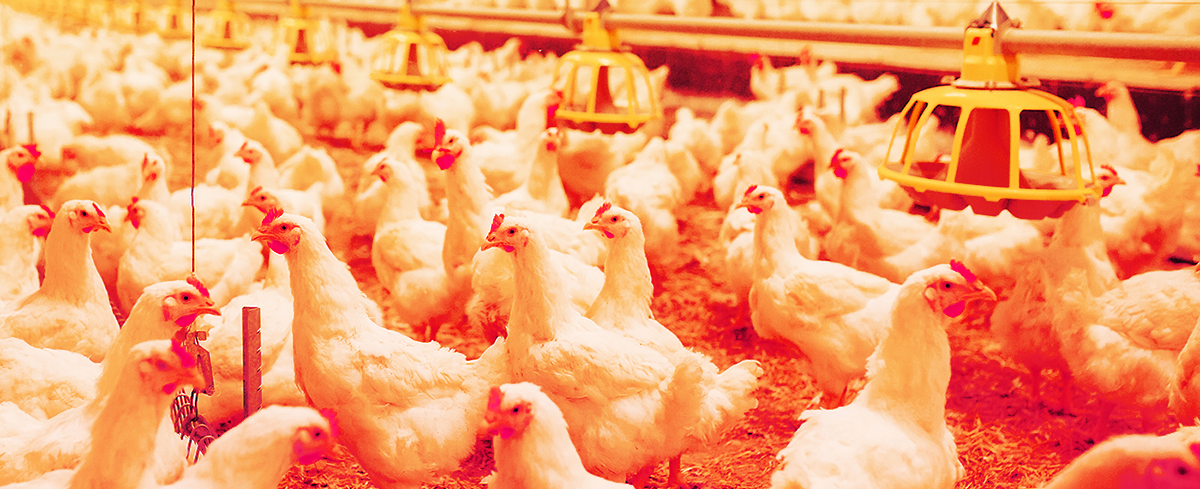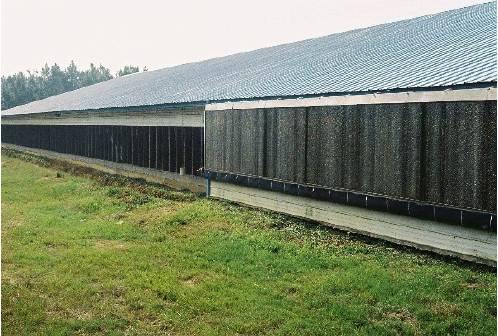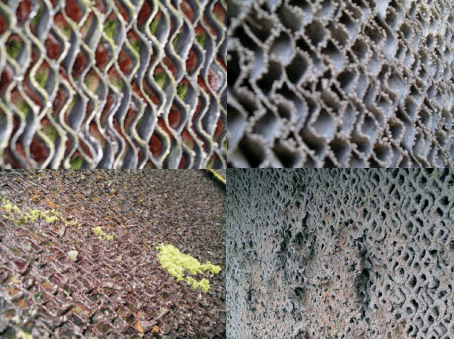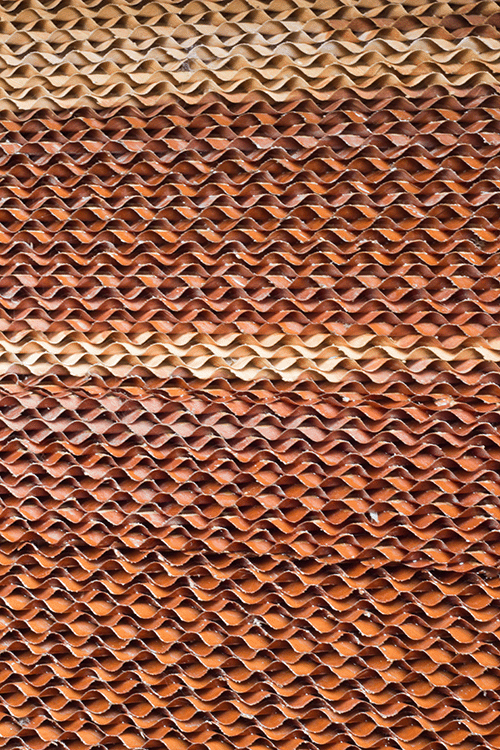
Poultry heat stress equals lower performance and higher mortality rates. With all the complexities of a modern day poultry production operation, this is a simple basic. When a poultry house gets too hot, the birds experience heat stress. If the birds get too hot, it affects their health and that just isn’t good for the bottom line.
Broiler chickens
Laying hens
Turkeys
To combat heat stress, poultry houses have been using evaporative coolers since the early 1960’s. Properly maintained modern-day evaporative coolers can bring the temperature down 10 degrees to 30 degrees below outside temperature, depending on humidity.
An evaporative cooler works by the water circulating in the system evaporating as it passes over the cooler pads installed along the walls of the poultry house. The evaporation cools the surrounding air. Flutes in the cooler pads allow air to pass through the pads, cooling the air as it travels into the poultry house. However, if the flutes on the cell pads are clogged, air cannot pass through properly and no or reduced cooling occurs.

The results are

Mineral scale is unavoidable in any system that utilizes water. All well and city water contain minerals that are deposited on containers, pipes or surfaces where water has evaporated. On a cell pad, these mineral deposits can look like little pebbles around the flutes or can become as bad as chunks of cement covering entire sections of the pads. The mineral scale deposits reduce the cooling capacity of a pad (or pad segment) by forming inside the flutes, blocking the air, or by blocking the normal water flow down the sides of the pad so evaporation does not occur in that section.
Microbial growth in an evaporative cooler is also inevitable. The warm, wet environment is the perfect breeding ground for microbial growth such as several kinds of algae, including fungus and bacteria. Algae can appear on the pads in different colors - green, brilliant green, blue or brown. Algae grow on the surface of the cell pads and embed partially in the irregular surface of the paper, where it sticks. Blue-green algae are slimy and may have layers, each one protecting the underlying layer. Once established, it is difficult to remove.
It is possible to kill the surface layer of algae leaving the underlying layers still alive. If the underlying layers of the algae are not handled, the algae will soon grow back.
Many species of brown algae are usually found in areas where there is a lesser amount of light, like inside the edge of the cooler pads. Even if the algae are dead, they are not easily removed without some mechanical force. The roots grow right into any mineral scale on the pads, compounding the problem.
Cleaning mineral deposits and microbial growth from evaporative cooler pads is essential to improving the cooling efficiency of the system, extending the life the pads, and reducing heat stress within the poultry house. But improper cleaning can leave the mineral scale and algae problem unresolved, and the paper cell pads can be damaged.
Here are recommended best practices for cleaning, restoring and maintaining evaporative cooler pads:
The sequence that should be used in cleaning older pads is to:

Time-Release± quat block that treats cooler pads for 30 days. Dissolves current scale and prevents new scale from forming.
